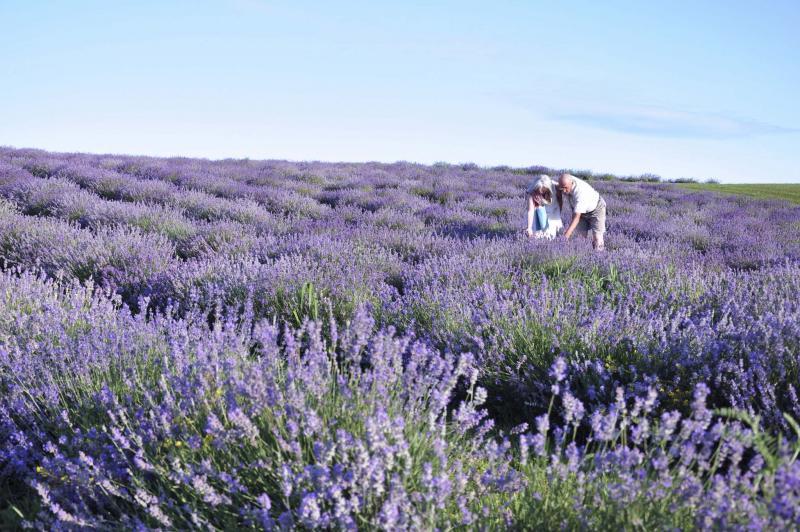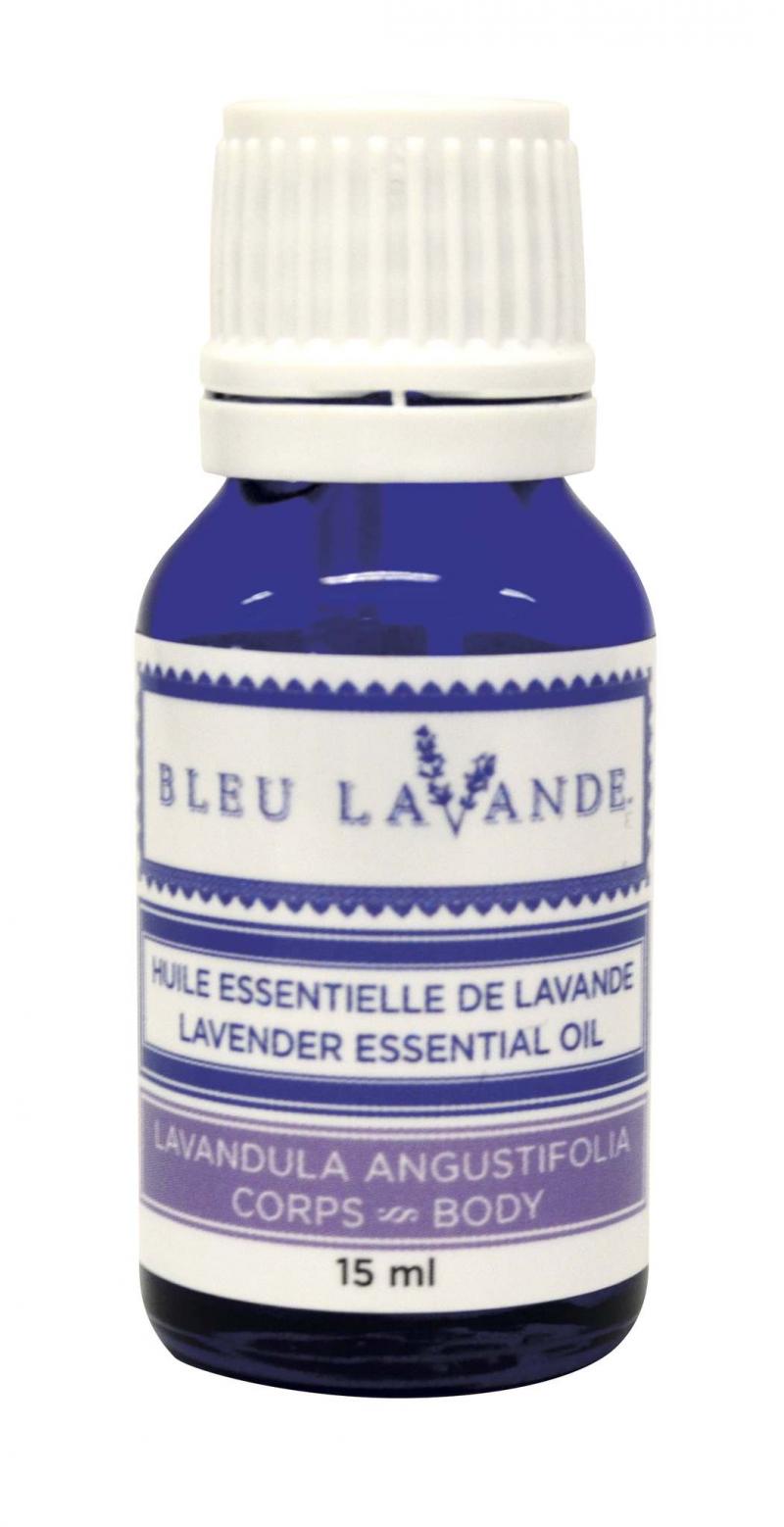
Bleu Lavande
Kids going back to school? Keep lice away with lavender essential oil.
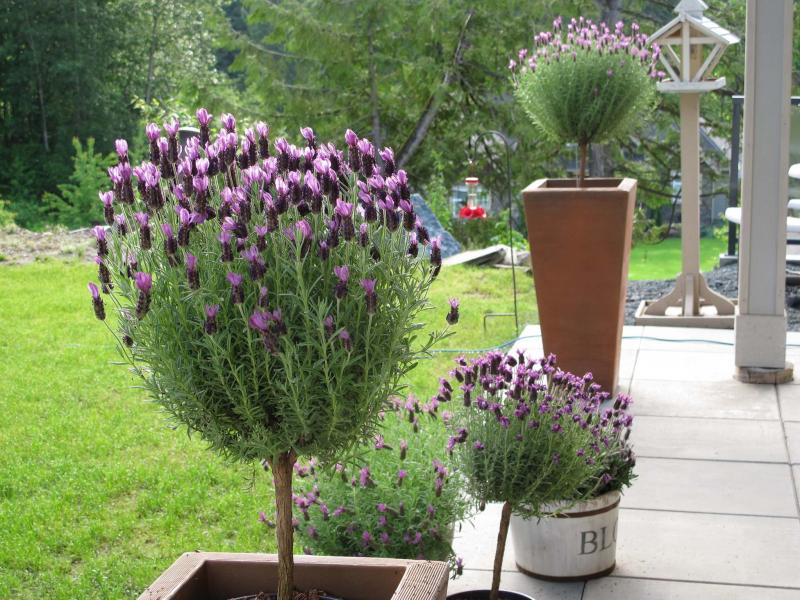
Qualitree
A potted lavender standard: ooh la la, oh so French.
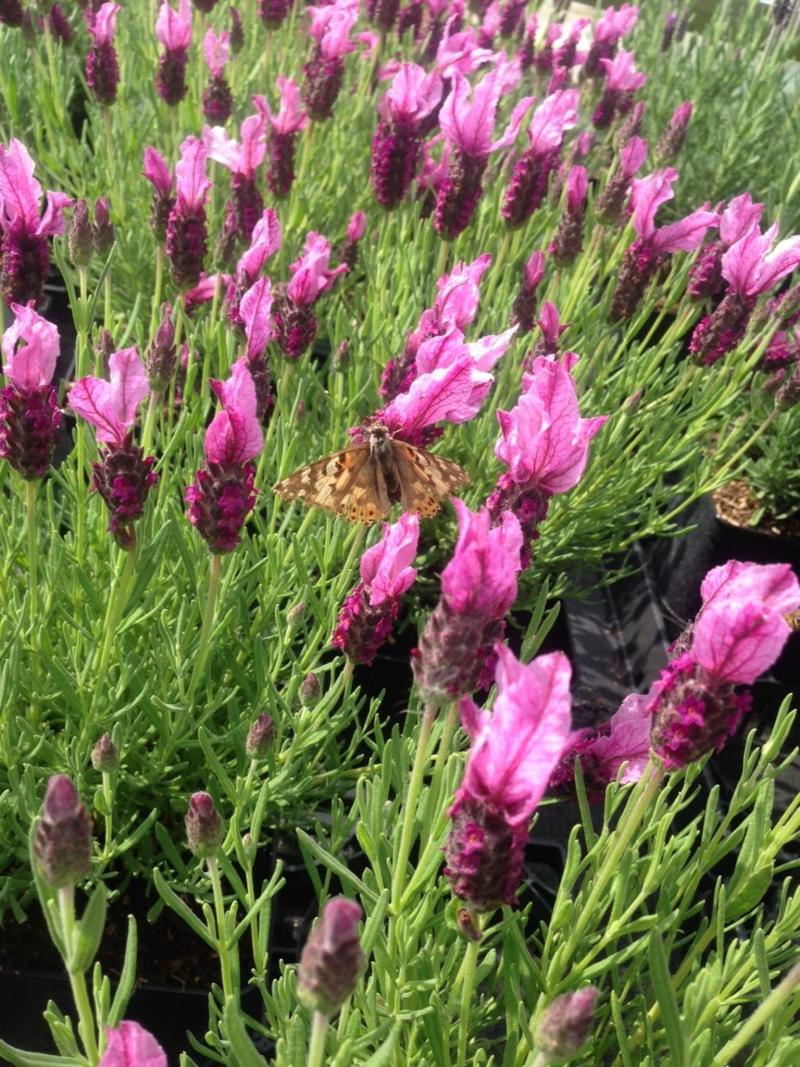
Qualitree
French or Spanish lavender has distinctive wing-like bracts. Shown: Anouk Deep Rose.
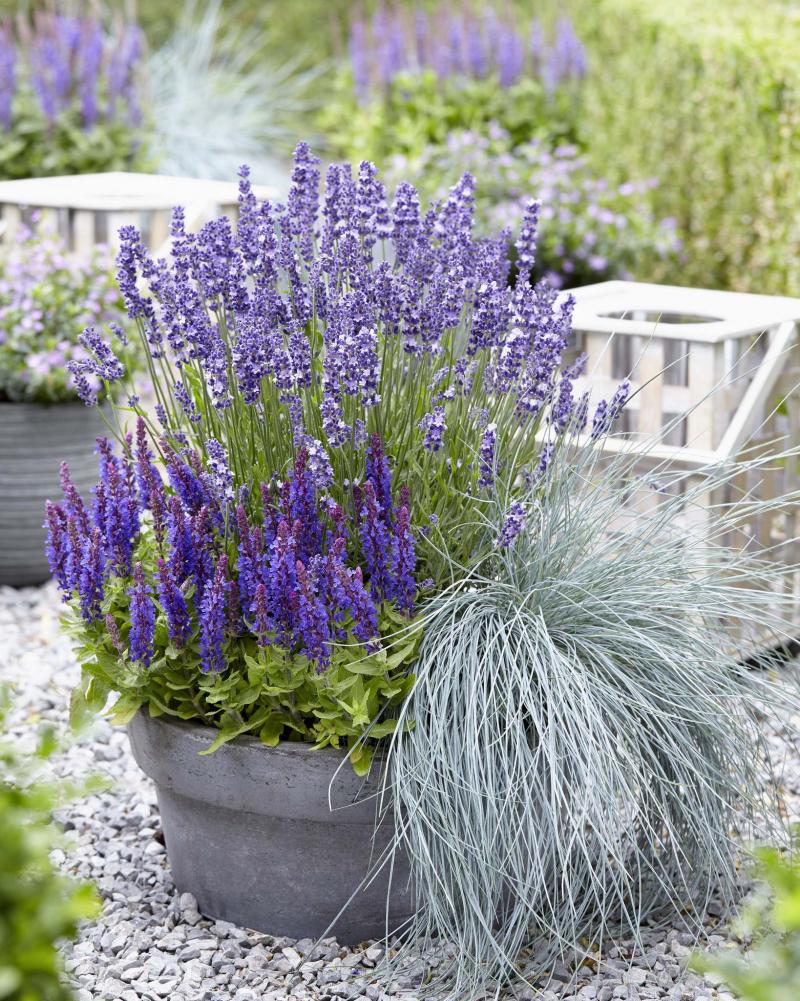
Qualitree
Lavender thrives in the close quarters of a pot that is just the right size.
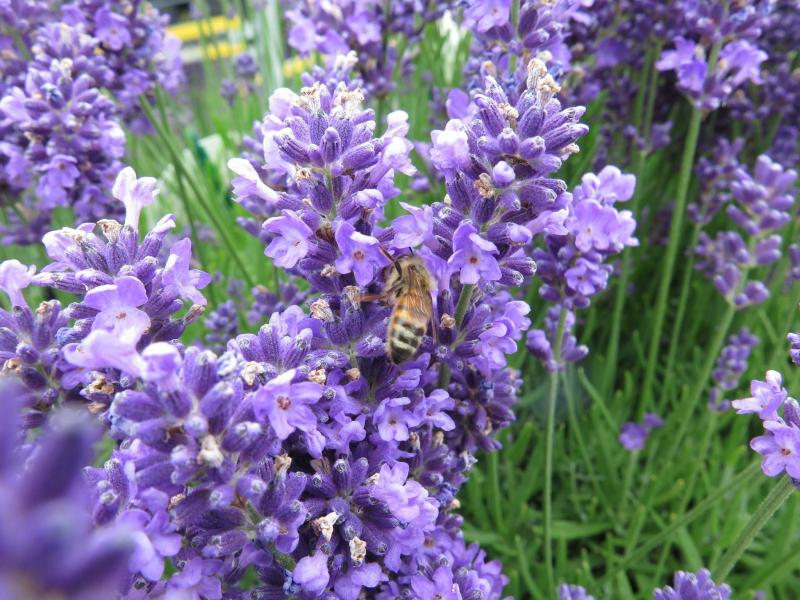
Qualitree
Honeybees are attracted to this English lavender variety known as Felice.
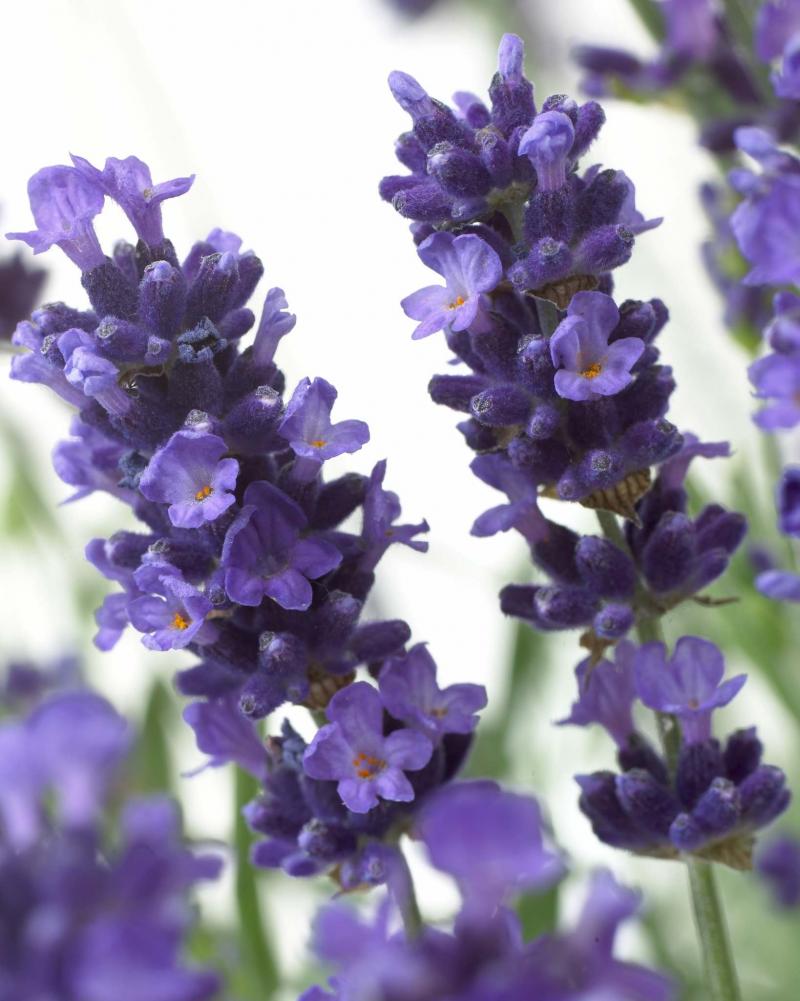
Qualitree
Hidcote Blue, a hardy lavender, is an improved variety with deeper blue flowers than Hidcote.
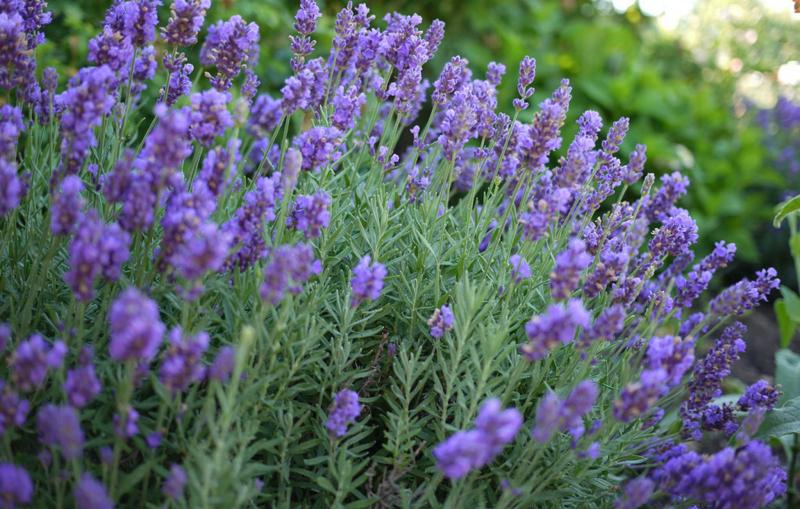
Vanstone Nurseries
Keep Phenomenal lavender looking phenomenal by growing it in well-drained soil.
At Bleu Lavande, Canada’s largest lavender farm (and the second largest in North America), more than 100,000 lavender plants are grown in row after undulating row.
Located in Fitch Bay, near Magog in the Eastern Townships of Quebec on 97 hectares of which 16 are dedicated to growing lavender, visitors come from around North America to take in the heady sights and scents of this legendary plant the many uses of which — both culinary and medicinal — date back to ancient Roman times.
Valerie Lebranchu, marketing and product development manager at Bleu Lavande, says visitors can watch the harvesting of lavender plants, enjoy a massage or a picnic in the heart of the lavender fields, shop and dine, or watch the harvesting of lavender plants to obtain essential oil and floral water once plants have finished blooming at the end of July. Lenore Linton, a local gardener, says the visitor experience is so divine she has visited twice and plans to go again.
Has the lavender plant Linton brought home with her from Bleu Lavande two years ago flourished in her Winnipeg garden? Linton takes advantage of a unique lavender and rosemary wintering service at Sage Garden Greenhouses which, for a small fee, provides potted lavender with the cool and sunny conditions it craves during the winter. Of course, the service has proven so popular, says owner Dave Hanson, space is at a premium as returning plants in their third or fourth year grow ever bigger.
At Bleu Lavande, careful preparations are taken each November to overwinter lavender, a cold-sensitive plant, and protect it from frost damage and freezing wind. At one time, plants were covered with layers of straw. Following the harsh winter of 2002 when there was very little snow cover, however, this method proved insufficient. Today winter protection comes in the form of insulating tarps.
Native to the Mediterranean but also parts of Africa, India and the Middle East, overwintering lavender outdoors can be challenging in Manitoba’s climate and heavy clay soil. In summer, lavender requires a warm, sunny, well-drained site. Its roots die in waterlogged soil and although drought-resistant, it won’t thrive if soil is allowed to dry out. At Bleu Lavande, the sandy soil of the region is conducive to growing lavender in the ground. In addition, though, workers mound the soil to provide ideal growing conditions.
Growing lavender in pots allows for greater control of soil mix (equal parts soil, sand, perlite and compost is one recommended recipe) as well as proper drainage, including temporary rescue from drenching rains by moving pots to a sheltered location.
For homeowners enjoying the beauty of lavender this summer in their gardens, should the ability to overwinter it be a primary concern? Deanne Cram, greenhouse manager at Shelmerdine Garden, says the colour and intricacy of lavender’s bloom as well as its sweet, soothing fragrance, continues to make lavender a hugely popular plant selection, especially among the growing number of aromatherapy enthusiasts. Indeed, says Cram, Shelmerdine’s supply of lavender quickly sold out this spring and an even greater selection will be available next year.
With more than 30 species in all, most cold climate gardeners are familiar with three main species of lavender. Lavandula angustifolia, a semi-woody plant also known as common or English lavender, prefers alkaline soil and is said to be the hardiest of the lavandula species. L. angustifolia includes varieties such as Hidcote and Munstead. A true lavender that is grown commercially for the highest quality lavender oil, L. angustifolia is characterized by narrow, grey-green leaves, unbranched spikes, and purple flowers.
Hidcote Blue, an improved variety with deep blue flowers and frosted silver foliage, grows to 30 centimetres. Dwarf Munstead is a dwarf English lavender variety that nevertheless grows to a height of 40 cm on wiry stems with gray-green foliage. It has lighter-coloured flowers, good heat tolerance as well as culinary qualities. Both Hidcote Blue and Dwarf Munstead are hardy to zones 3 to 4.
Other angustifolia varieties available locally include the non-hardy Ellagance series (purple or white blooms) as well as Felice, a compact English lavender which flowers earlier than Munstead. A magnet for bees, Felice is well suited to the front of the border and makes a great companion to roses.
Lavandula x intermedia is a hybrid of L. angustifolia and L. latifolia. It produces long spikes of purple-blue flowers. Phenomenal, a hardy variety, grows to 75 cm and forms a bushy mound of silver foliage. It is excellent for bouquets or dried flowers. A non-hardy variety, Provence, found at Shelmerdine, is intensely aromatic and suitable for making your own potpourri.
Lavender stoechas, known as French or Spanish lavender, is a less hardy species, tolerant of only a few degrees of frost, and distinguished by eye-catching pineapple-like blooms with wing-like bracts or flags reminiscent of perky rabbit ears or butterflies depending on your perspective. This variety is more tolerant of slightly acidic soil and grows well in potting medium that includes peat moss. This year Shelmerdine carried numerous L. stoechas varieties including Anouk with light and dark purple blooms. Available as a compact mounding plant or as a potted standard (miniature tree form), Anouk has a longer blooming period. Anouk Deep Rose is a variety with deep rose bracts on lavender rose flowers.
L. stoechas Lusi Purple and Lusi Pink are recent developments with larger, later blooming flowers.
While at Oakridge Garden Centre in Steinbach this spring, I came across two other stoechas varieties, Sugarberry Ruffles and Kew Red. Sugarberry, with a compact habit, has long-blooming pink and purple flowers while Kew Red, a taller variety, has fuchsia-coloured blooms. Both are improved varieties with good tolerance to heat and high humidity.
Much of the lavender found in local greenhouses comes from Qualitree, a Dutch-style nursery located in Rosedale, B.C. Tony Van Oort, co-founder and sales manager, says that Qualitree maintains close ties with European lavender breeders and has become a test station for lavender in North America. In the last decade, says Van Oort, there have been tremendous breeding advances in the lavandula genus resulting in more colour variations, reblooming characteristics, and improved heat tolerance and disease resistance. Taller, longer spikes translate into a more colourful display while more compact varieties with plump blooms lend themselves to border plantings and mixed containers.
Don’t get stuck on hardiness, adds Van Oort. Lavender has great value as an annual. It attracts bees and butterflies, emits a wonderful fragrance, and can be used to flavour everything from jams to vinegar, oils, and spices. Known for its antiseptic qualities, lavender can be found as an ingredient in cleaning products as well as shampoo and body lotion.
Bleu Lavande, for example, recommends massaging a few drops of lavender essential oil behind the ears, on the neck, and on the scalp as a natural repellent against lice. Massage gently so the oil penetrates the skin. Essential oil can also be added to a comb.
If there is a complaint about lavender, it may have more to do with the disappointment one feels when the bloom period comes to an end. To maintain an attractive appearance and possibly encourage a second flush of bloom in late summer or fall, stems should be cut back lightly once blooms are spent. When harvesting stems, cut to about 7.5 cm above the ground, taking care to not cut into the woody portion of the plant.
Did your lavender crop falter this wet summer? Put the blame on our sticky clay soil or too large pots or even perhaps too much fertilizer. Next year plan to try some of the new, exciting lavender varieties, growing them in pots that are just big enough to give the plant’s roots room enough to grow and fertilize only sparingly, if at all.
If planning to overwinter hardy lavender varieties in your garden, leave stems standing for added winter protection to the crown of the plant. A combination of mulch and reliable snow cover is essential. Covering your marginally hardy plant with a Styrofoam rose cone may also help to ensure its survival over winter.
colleenizacharias@gmail.com
Notice:
Interested in becoming a Master Gardener? Registration is now open for the 2016-2017 Manitoba Master Gardener program. One-day courses are taught in Winnipeg over a period of eight Saturdays starting October 15. This is an excellent opportunity to learn more about gardening and to share your gardening knowledge with others through community volunteerism. To register call 204-725-8700, ext. 6028. For more details visit www.mgmanitoba.com or email mgmanitoba@gmail.com.

